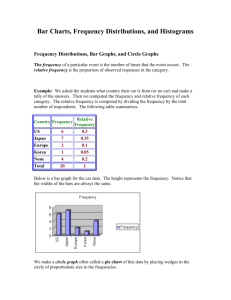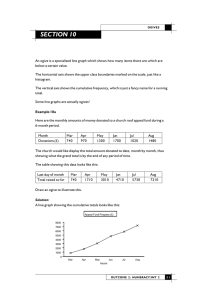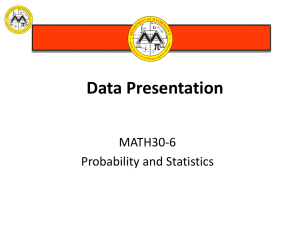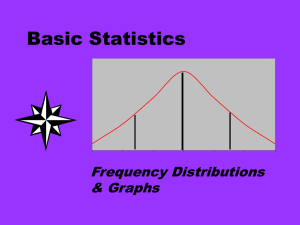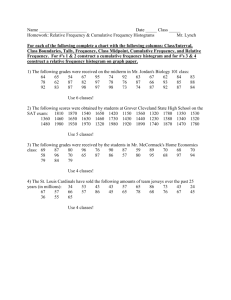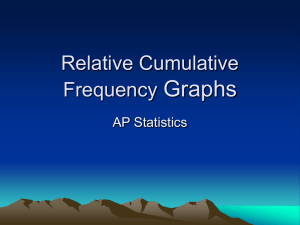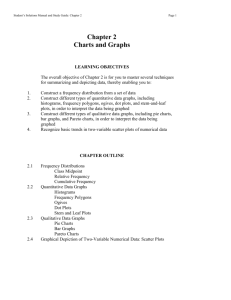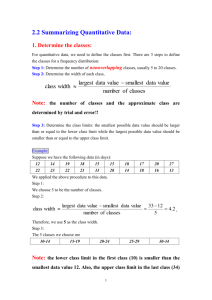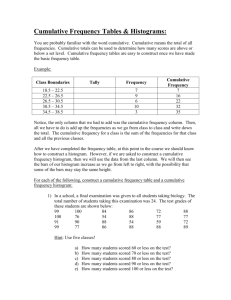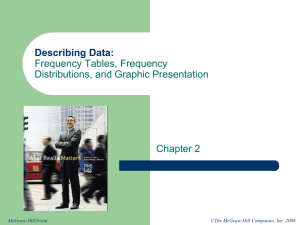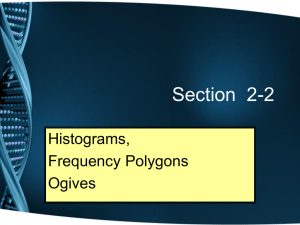AP STATISTICS LESSON 1
advertisement
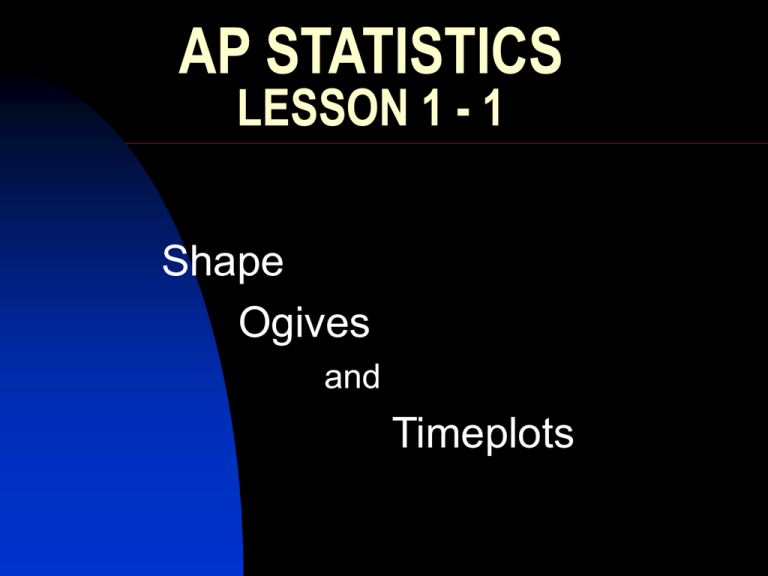
AP STATISTICS LESSON 1 - 1 Shape Ogives and Timeplots Essential Question: What shapes can be expected and how are Ogives and Timeplots made? To organize data and recognize basic shapes that are formed. To create Ogives (relative cumulative frequency graphs) To organize data into Timeplots. Warm – up #1 Pages 16 - 17 Problem 1.8: ARE YOU DRIVING A GAS GUZZLER? Warm – up # 2 Page 24 Problem 1.15 CHEST OUT, SOLDIER! Symmetric and Skewed Distributions A distribution is symmetric if the right and left sides of the histogram are approximately mirror images of each other. A distribution is skewed to the right if the right side of the histogram ( containing the half of the observations with larger values) extends much farther out than the left side. It is skewed to the left side if the histogram extends much farther out than the right side. Symmetry and Skewed to the Right Symmetric Distribution: The two sides of the histogram are roughly the same shape, so we call the distribution symmetric. Skewed Right: The distribution has a single peak, but is skewed to the right. The right tail of the histogram extends out much father than the left tail. Note: The vertical scale is not the count of words but the percent of all of Shakespeare’s words that have each length. A histogram of percents rather than counts is convenient when the counts are very large or when we want to compare several distributions. Pages 26 - 27 Problem 1.16: STOCK RETURNS Percentile The pth percentile of a distribution is the value such that p percent of the observations fall at or below it. Relative is a word used in Statistics that indicates that percents are to be used. Ogive (Relative cumulative frequency graph) An Ogive tells us the relative standing of an individual observation. Step 1: Decide on class intervals and make a frequency table, just as in making a histogram. Add three columns to your frequency table: relative frequency, cumulative frequency, and relative cumulative frequency. Step 2: Label and scale your aces and title your graph. Step 3: Plot a point corresponding to the relative cumulative frequency in each class interval at the left endpoint of the next class interval. How to Construct an Ogive Pages 29 - 30 To get the values of relative frequency column, divide the count in each class interval by 43. Multiply by 100 to convert to a percentage. To fill in the cumulative frequency column, add the counts in the frequency column that fall in or below the current class interval. For the relative cumulative frequency column, divide the entries in the cumulative frequency column by total number of individuals. Ogive Exercise Page 31 Exercise 1.20 SHOPPING SPREE, II Time plots A time plot of a variable plots each observation against the time a which it was measured. Always mark the time scale on the horizontal axis and the variable of interest on the vertical axis. If there are not too many points, connecting the points by lines helps show the pattern of changes over time. Time plots (continued…) Look for : Trends – overall pattern that indicates a longterm upward or downward movement over time. Seasonal variation – a pattern that repeats itself at regular time intervals.
